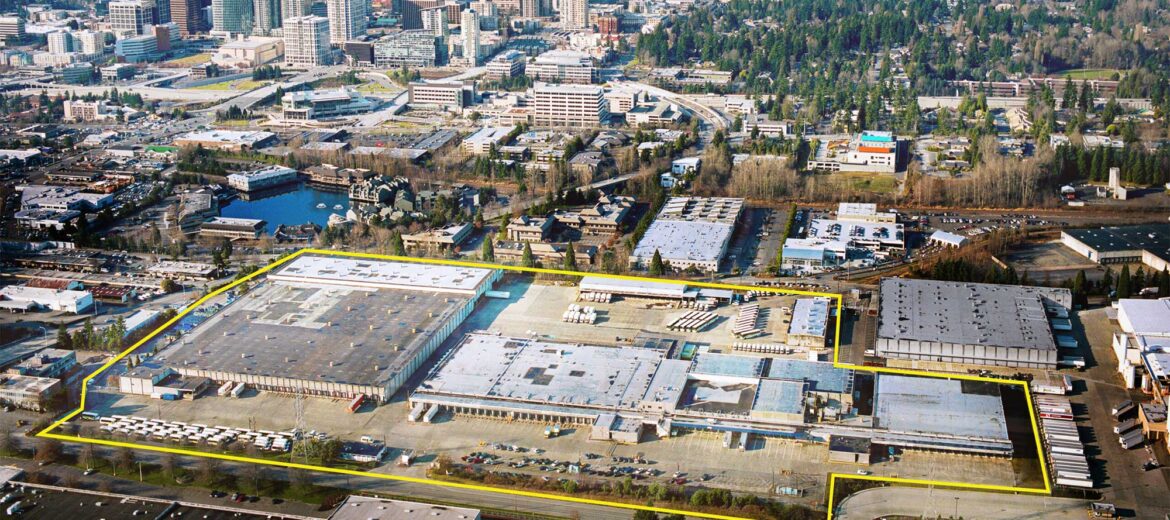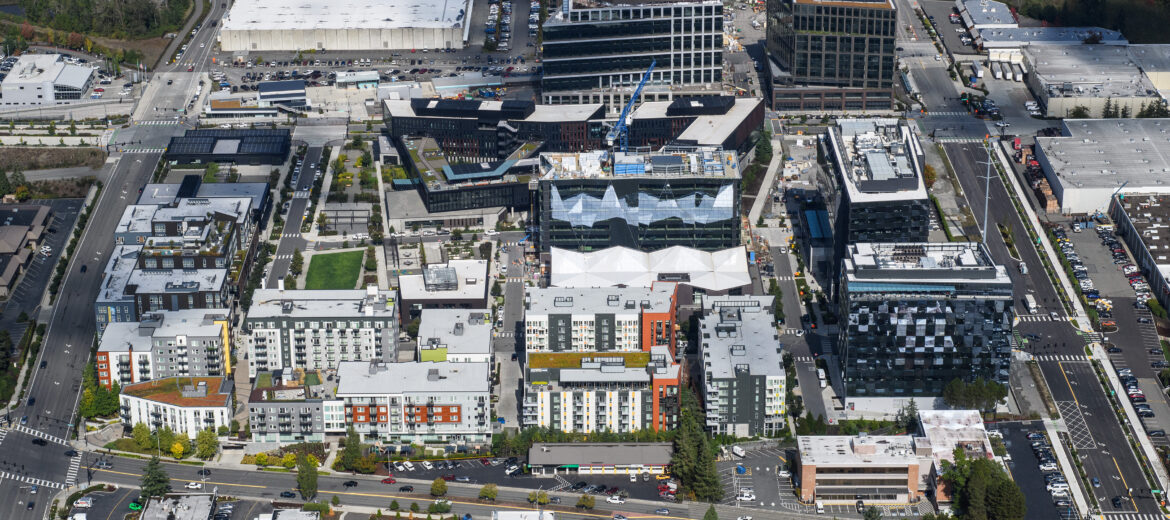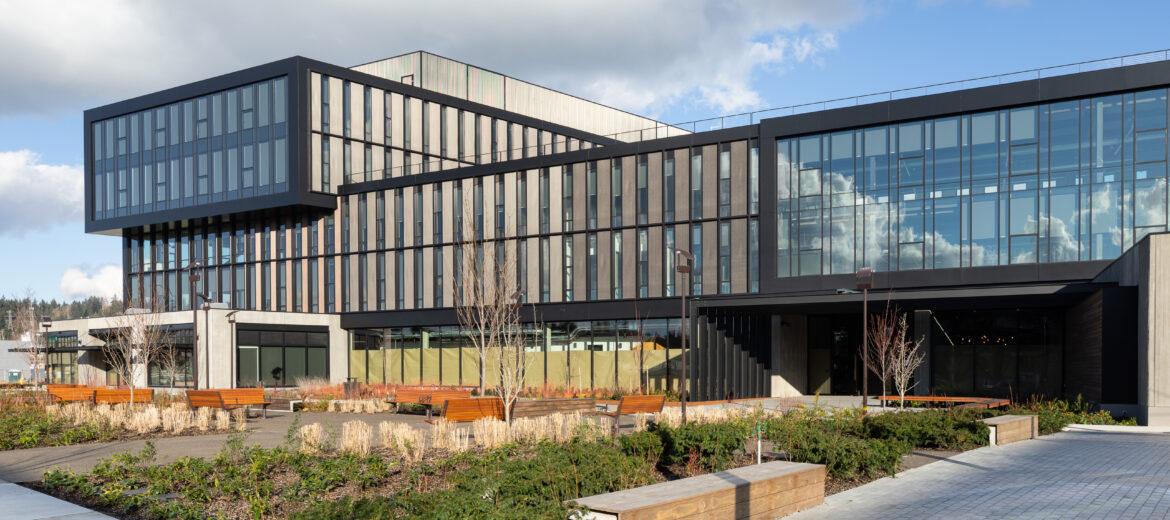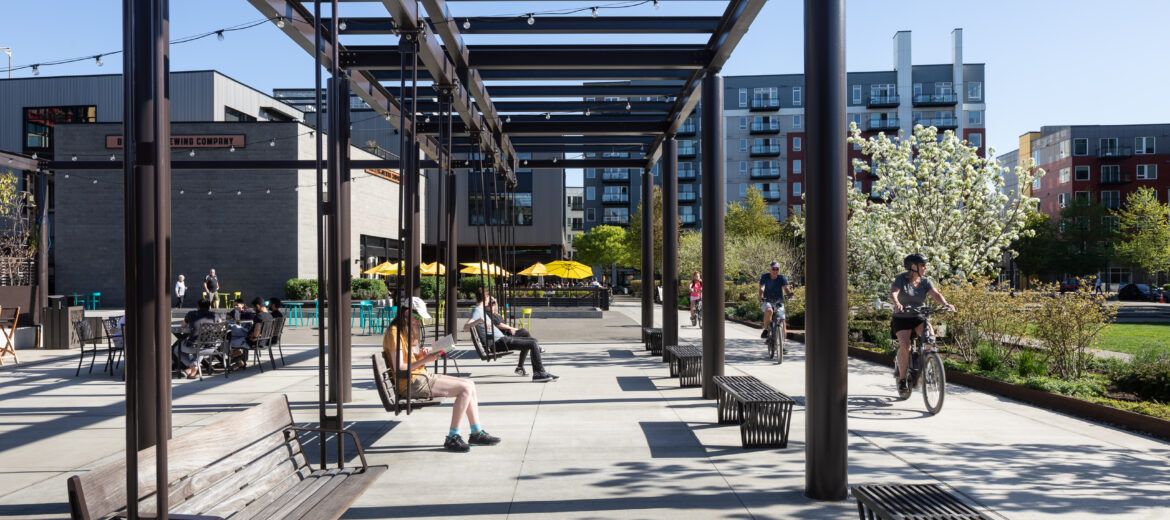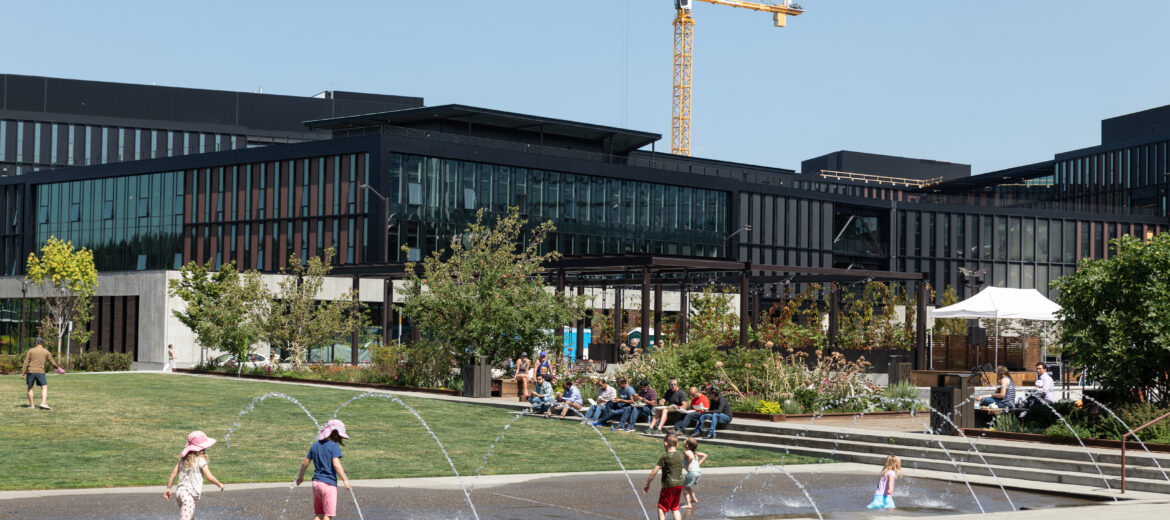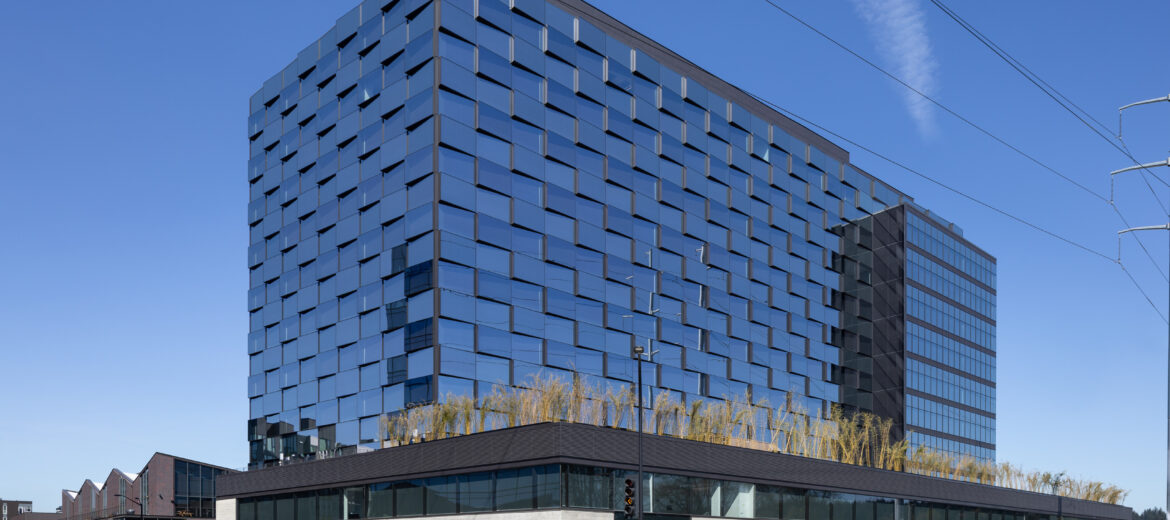The vibrant, thriving community with over 800 residential units, millions of square feet of office and tens of thousands of square feet of retail, now flourishes where there used to be only an industrial use site. The Spring District’s transformation is an example of how sustainability and energy efficiency can be integrated into restoration projects.
From a former industrial use site to LEED certification for Neighborhood Development (LEED-ND) certification for mixed-use development: it was a challenging journey, but Shorenstein—along with co-developer Wright Runstad & Co.—made it happen.
Like many projects of its kind, the Spring District in Bellevue, WA started out with a solid direction and unwavering vision. In this case, that vision rotated around sustainability.
The Spring District features that are central to achieving the LEED-ND certification are access to transit, with the
neighborhood centered around a new East Link light rail station and access to a bus rapid transit station a quarter-mile away. Additionally, the District features a design conducive to walking and biking, including a multipurpose path and cycle track providing a protected bike connection to the 42-mile Eastrail as well as a bike facility near the rail station for bike storage, showering, and changing. Furthermore, the District has a public open space with native plants and trees in addition to a bioretention site to filter rain run-off. Finally, there are lower parking site ratios in the District to encourage alternative and sustainable transportation.
The Spring District has delivered more than 800,000 square feet of LEED-certified buildings, with an additional 650,000 square feet of LEED Silver-targeted projects under construction, and another 530,000 square feet under design and permitting review.
Explore other case studies:
